The ComColors model
The 6 personality types of the ComColors model
Different operating modes
Psychometrics (the science of measuring techniques in psychology) distinguishes between 6 personality types by measuring 3 behaviours. Your motivation, stress management and way of perceiving the world are specific to your personality type.
The ComColors model defines 6 personality types represented by colours. We all have all 6 personality types in varying percentages. Using one of our personality types means communicating and functioning in a way that is specific to that colour. We are all capable of doing this, with greater or lesser ease depending on the percentage associated with that personality type.
For example, the person to whom this diagram corresponds will find it easier to show the characteristics of the colour red, but will require more effort to use the colour orange:
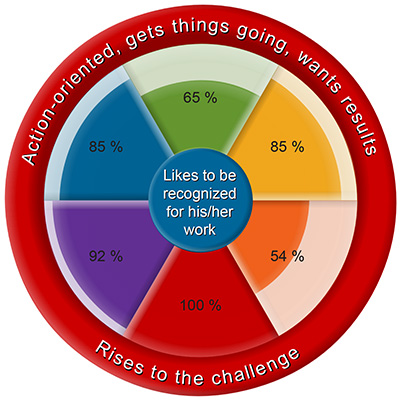
In the ComColors model, we have chosen not to give names to the personality types to avoid potentially negative interpretations. By assigning colours to the 6 possible profiles, we ensure that you can identify them without any preconceptions.
Different ways of communicating
Each personality type has its own way of expressing itself and understanding the world. These variations in communication and perception can lead to misunderstandings and even conflicts.

By understanding our own way of working and that of others, it becomes possible to open a calmer discussion. Misunderstandings are reduced and the message is better understood by the parties involved.
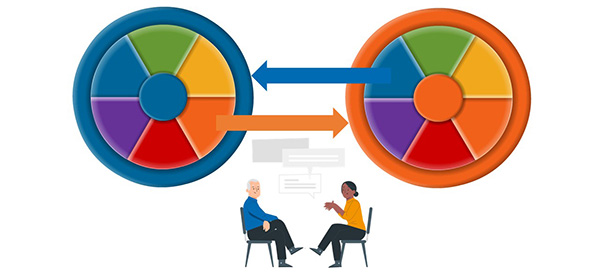
Getting to know yourself better to manage stress
In the face of stress, the ComColors model offers a solution for returning to positive energy. First of all, getting to know yourself allows you to identify the behaviours that you gradually display as stress increases.
By drawing on the motivation of your personality type, you can recharge your batteries and get out of the stress cycle.
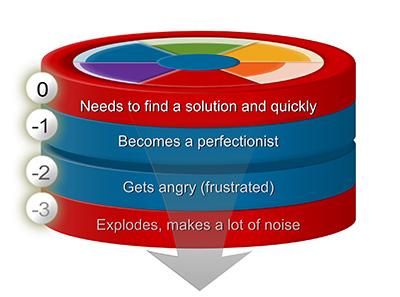
Synthesising the best of what already exists
Franck Jullien created the ComColors model in 2005 because he couldn’t find a model that met his expectations in terms of rigour and clarity. He therefore combined the most relevant and positive elements of existing personality type models to create an effective and accessible synthesis.
The ComColors model diagram
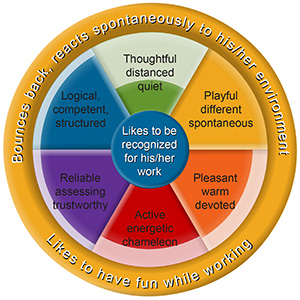
The ComColors diagram draws on a number of models, each time choosing elements that make the model more robust and easier to understand:
RIASEC
(Holland, 1959)
Structure of the 6 personality types diagram
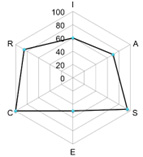
Personality Adaptation
(Ware, 1976)
Psychological basis
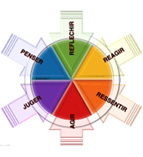
DISC
(Marston, 1928)
Colour code
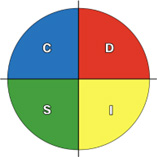
HBDI
(Herrmann, 1988)
Brain metaphor
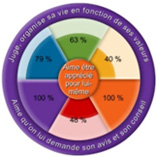
MBTI
(Myers, Briggs, 1956)
Internal dynamics
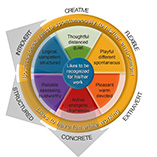
Dernière mise à jour le 30 January 2024

